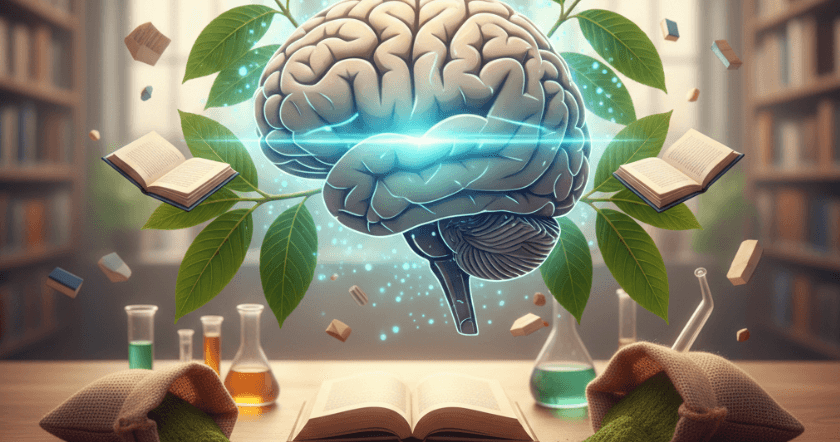Blog
Kratom And Mental Health: What Research Says

The tropical evergreen tree known as Kratom (Mitragyna speciosa) is indigenous to Southeast Asia, particularly Thailand, Indonesia, and Malaysia. Local populations have been using its leaves for vitality, discomfort treatment, and mood improvement for ages. However, mitragynine and 7-hydroxymitragynine (7-OH), two alkaloids that have attracted the greatest interest from both academics and consumers, are the main culprits for these effects.
We’ll discuss these substances, their physiological functions, and their importance in comprehending the intricate profile of Kratom in this blog post.
1. What Are Alkaloids And What Makes Them Important?
Alkaloids are nitrogen-containing chemical molecules that are found in nature and have significant physiological effects on people. These substances are responsible for the energizing or calming effects of several well-known plants, including coffee (caffeine), tea (theophylline), and chocolate (theobromine).
Although more than 40 alkaloids have been found in the best Kratom, mitragynine and 7-hydroxymitragynine are thought to be the most prevalent and pharmacologically active.
2. The Main Alkaloid, Mitragynine
The most prevalent alkaloid in famous Kratom leaves is mitragynine, which accounts for 60–70% of the overall alkaloid content. It is crucial in determining the stimulating and analgesic properties of the plant.
How It Operates
Although it functions differently from typical opioids, mitragynine interacts with mu-opioid receptors in the brain, which are the same receptors that conventional discomfort relievers target. Mitragynine functions as a partial agonist rather than fully activating these receptors, which means it relieves symptoms without having the full sedative or respiratory-depressant effects of stronger opioids.
It also contributes to the stimulating and mood-enhancing effects of Kratom by interacting with the adrenergic, serotonergic, and dopaminergic systems.
Important Mitragynine Effects
- Little increase in attention and vigor (particularly at lower dosages)
- Improved motivation and mood
- Moderate to high dosages of natural restlessness alleviation and relaxation
- Fewer adverse effects in comparison to more potent opioids
3. The Strong Metabolite 7-Hydroxymitragynine (7-OH)
Despite making up less than 2% of the leaf’s total alkaloid profile, 7-hydroxymitragynine has a far greater efficacy than mitragynine, which predominates in quantity.
Why It’s So Effective
As a metabolite of mitragynine, 7-OH is created during the body’s processing of mitragynine. When compared to traditional analgesics, it significantly reduces uneasiness because of its stronger binding to mu-opioid receptors. But because of its strength, it’s also the substance most frequently linked to the calming and sedative properties of Kratom.
7-Hydroxymitragynine’s Principal Effects
- Powerful analgesic (discomfort-relieving) effects
- Discomfort reduction and profound relaxation
- Higher dosages of sedation
- Shorter duration of effects than those of mitragynine
4. The Equilibrium Between 7-OH And Mitragynine
The ratios of these alkaloids in various Kratom strains, such as Green Maeng Da Kratom, Red Bali Kratom, or White Borneo Kratom, vary, resulting in distinct effects.
White and Green Strains: Higher amounts of mitragynine are typically found in White and Green strains, which lead to more stimulating and uplifting experiences.
Red Strains: Conversely, Kratom red strains frequently have greater 7-OH contents, which promote deeper relaxation and uneasiness relief.
This equilibrium explains why Kratom users frequently try different famous Kratom strains and Kratom dosages to see what suits them the best.
5. Interest In Science And Medicine
The alkaloids in Kratom have drawn interest from experts worldwide who are searching for safer substitutes for conventional opioids. Although further study is required to validate these findings, preliminary investigations indicate that mitragynine and 7-OH may offer effective discomfort treatment with lower risks of respiratory discomfort or overdose.
Researchers are also investigating how Kratom’s distinct profile—often referred to as the “entourage effect”—is influenced by its multi-alkaloid synergy, which includes more than simply mitragynine and 7-OH. This suggests that the behavior of the principal alkaloids in the body may be modulated by the lesser ones.
6. Regulation, Safety, And Conscientious Use
The alkaloids in Kratom are still under investigation despite encouraging studies because of worries regarding abuse, dependence, and inconsistent dosage. While some areas allow the sale of Kratom products as Kratom herbal supplements, others regulate or outright prohibit them.
For Customers, This implies
- To guarantee purity and correct labeling, only purchase from reliable, laboratory-tested suppliers.
- Kratom should not be used with other stimulants or depressants.
- To avoid developing a tolerance, use modest dosages and take pauses.
Maintaining Kratom’s safety and reputation requires responsible use and appropriate education.
7. Kratom Alkaloid Research’s Future
The goal of ongoing research is to separate mitragynine and 7-OH and get a better understanding of their potential medicinal applications. Scientists in the pharmaceutical industry are already developing synthetic analogs that minimize negative effects while mimicking the positive Kratom effects.
Both mitragynine and 7-hydroxymitragynine will continue to play a major role in arguments on the safety, legality, and possible medicinal benefits of Kratom.
Conclusion
The primary components of Kratom’s intricate pharmacology are mitragynine and 7-hydroxymitragynine. Together, they produce the harmony of relaxation, discomfort alleviation, and excitement that characterizes the Kratom experience. In addition to assisting consumers in making better decisions, knowledge of these alkaloids advances science’s efforts to create safer, plant-based remedies for restlessness and well-being.